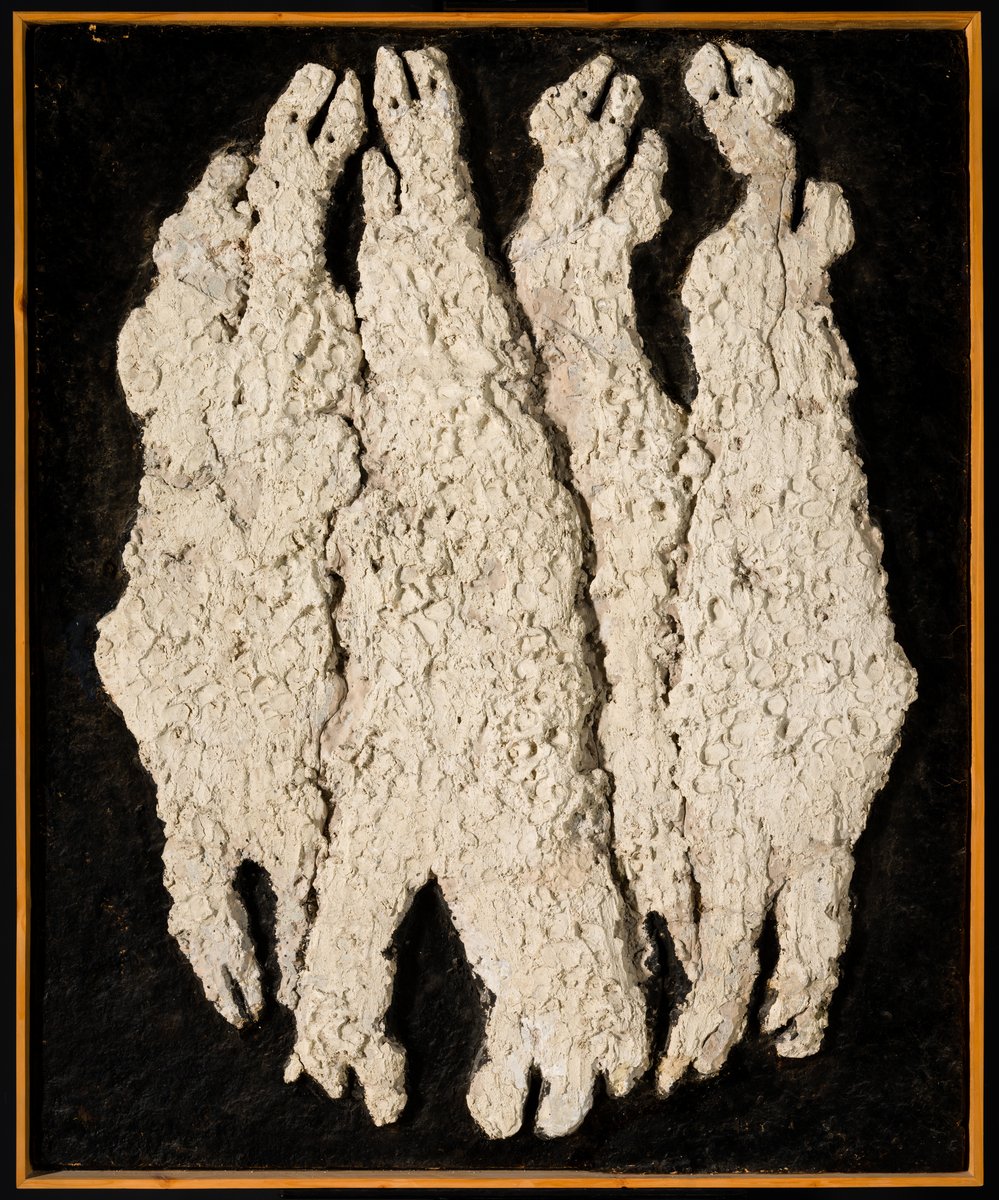
Mass
Department of Art after 1800
| Artist | |
|---|---|
| Culture | Belgian |
| Date | model: 1903; limestone carving: 1909 |
| Object type | sculpture |
| Medium, technique | limestone |
| Dimensions | 205 x 151 x 108.5 cm |
| Inventory number | 3910.U |
| Collection | Department of Art after 1800 |
| On view | This artwork is not on display |
Égide Rombaux honed his skills as a sculptor at the Académie des Beaux Arts in Brussels, and the erstwhile student returned to the school to teach in the late 1890s. His style was heavily influenced by his studies in Italy and his activities in Florence in the 1880s and late 1890s, as well as by Neoclassicism, Rodin and contemporary French sculpture, modernism, and the more mystical tendencies of symbolism, most closely associated with Belgium, which were mainly expressed in his choice of themes.
Les filles de Satan, depicting the undulating movements of three female figures emerging from an unworked base, was first executed as a marble sculpture in 1903. Based on this large-scale work, the sculptor produced three further copies in limestone, two of which matched the size of the original. Following the sensation of his exhibition in Brussels, he was invited to many of the main international art shows in Europe in the first decades of the 1900s (Amsterdam, Milan, Berlin etc.), including the Winter Exhibition of the Hungarian National Society of Fine Arts in Budapest in 1908-1909, where he exhibited together with the Belgian exponents of symbolism. At the exhibition, Les filles de Satan was awarded the Society’s gold medal. Another version of the work is in the Musées Royaux des Beaux-Arts de Belgique in Brussels.
Luca Keserü
Tóth, Ferenc, Donátorok és képtárépítők. A Szépművészeti Múzeum Modern Külföldi Gyűjteményének kialakulása, Szépművészeti Múzeum, Budapest, 2012, p. 127.
This record is subject to revision due to ongoing research.